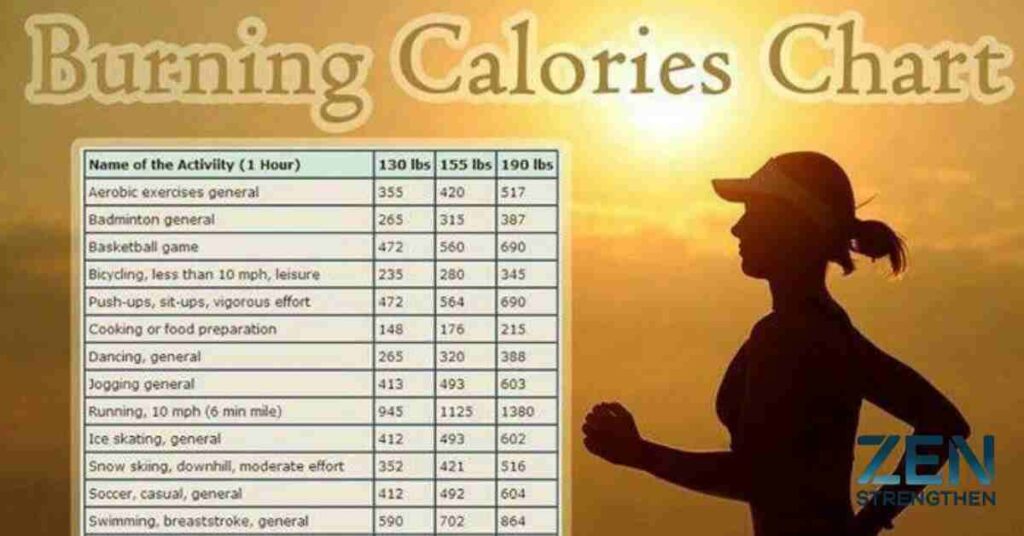In today’s fitness-conscious world, the humble act of walking has taken center stage. From casual strollers to dedicated fitness enthusiasts, 6 km in steps people are lacing up their shoes and hitting the pavement.
But have you ever wondered just how many steps you’re taking during your daily jaunt? Let’s dive into the world of 6 km walks and uncover the secrets behind this perfect distance for boosting your health and well-being.
The Power of Walking: More Than Just a Stroll
Walking isn’t just a way to get from point A to point B—it’s a powerhouse of health benefits wrapped in a low-impact package. A 6 km walk, which translates to about 3.72 miles, strikes the sweet spot between accessibility and effectiveness. It’s long enough to give you a solid workout but short enough to fit into most people’s busy schedules.
“ Walking is man’s best medicine.” – Hippocrates.
This ancient wisdom holds true today, perhaps more than ever. Let’s break down why 6 km matters and how to make every step count.
Decoding the 6 km Journey: Steps Unveiled

Average Steps in 6 km: A Quick Overview
The number of steps in 6 km isn’t a one-size-fits-all figure. It varies based on several factors, but here’s a general breakdown:
| Gender | Walking (Average Steps) | Running (Average Steps) |
| Women | 8200 – 8400 | 6185 |
| Men | 7800 – 8000 | 5714 |
These figures might surprise you. Why the difference between walking and running? It all comes down to stride length.
Walking vs. Running: The Step Count Difference
When you walk, your stride length is naturally shorter than when you run. This means you take more steps to cover the same distance. Let’s break it down further:
Walking Breakdown:
- Average stride length: 2.1 to 2.5 feet
- Steps per mile: Approximately 2,000 to 2,500
Running Breakdown:
- Average stride length: 3.5 to 4.5 feet
- Steps per mile: Approximately 1,400 to 1,700
people of all gender: man and women Differently?
You might have noticed that women tend to take more steps than men over the same distance. This isn’t just coincidence—it’s biology at work.
- Women typically have shorter legs relative to their height, resulting in a shorter stride length.
- Men, with their generally longer legs, cover more ground with each step.
But remember, these are averages. Individual variations can be significant based on factors we’ll explore next.
The Science Behind Your Stride

Factors Influencing Step Count
- Height and Leg Length: Taller individuals generally have longer strides, meaning fewer steps over the same distance.
- Cadence and Speed: A faster pace often means a longer stride, potentially reducing total step count.
- Terrain and Incline: Uphill walks typically involve shorter strides, increasing step count. Downhill sections might decrease it.
- Age and Fitness Level: Younger, fitter individuals tend to have longer strides.
- Walking Surface: Soft surfaces like sand can shorten your stride, while smooth pavements might lengthen it.
How to Measure Your Personal Step Length
Want to get specific? Here’s a simple method to calculate your average foot step length:
- Measure a distance of 20 feet.
- Walk this distance naturally, counting your steps.
- Divide 20 by the number of steps taken.
For example, if you took 15 steps: 20 ÷ 15 = 1.33 feet per step
Now you can use this to estimate your steps more accurately!
The Myth of “One-Size-Fits-All” Step Counts
While averages are helpful, they’re just that—averages. Your personal step count might differ, and that’s perfectly okay. What matters most is consistency and gradual improvement in your fitness journey.
Calculating Your 6 km Step Count: Methods and Tools

High-Tech Options
1. Fitness Trackers and Smartwatches
These wearable devices have revolutionized how we track our movements. Popular brands include:
- Fitbit
- Apple Watch
- Garmin
- Samsung Galaxy Watch
They use accelerometers to detect motion and algorithms to interpret this data into step counts.
2. Smartphone Apps: Top Picks and Features
Your smartphone can double as a pedometer with the right app. Some popular choices:
| App Name | Key Features |
| Google Fit | Integrates with other health apps, tracks multiple activities |
| Pacer | Community challenges, personalized fitness plans |
| Stepz | Simple interface, Apple Health integration |
| Accupedo | Power-saving mode, detailed graphs |
Low-Tech Alternatives
1. The Pedometer Comeback
Traditional pedometers are making a comeback for their simplicity and reliability. They’re great for those who want to avoid the distractions of smartphones or the complexity of smartwatches.
2. DIY Step Counting Techniques
For a no-frills approach, try these methods:
- Count your steps for one minute, then multiply by the number of minutes walked.
- Use landmarks to estimate distance, then convert to steps using your personal stride length.
Mathematical Approaches
1. Steps-per-Mile Conversion
A rough estimate: There are about 2,000 steps in a mile for the average person. So for 6 km (3.72 miles):
3.72 * 2,000 = 7,440 steps
2. Stride Length Formulas
For a more precise calculation:
- Measure your stride length (as described earlier).
- Use this formula: Number of steps = Distance / Stride length
For example, if your stride length is 2.5 feet: 6 km = 19,685 feet 19,685 / 2.5 = 7,874 steps
Beyond the Numbers: The Health Impact of a 6 km Walk
Walking 6 km isn’t just about racking up steps—it’s a full-body health boost. Let’s explore the benefits:
Calories Burned: What to Expect

The number of calories burned depends on factors like weight, speed, and terrain. However, here’s a general estimate:
| Weight (lbs) | Calories Burned in 6 km Walk |
| 130 | 300-350 |
| 155 | 360-420 |
| 180 | 420-490 |
Cardiovascular Benefits
Regular walking can:
- Lower blood pressure
- Reduce risk of heart disease and stroke
- Improve cholesterol levels
Mental Health Boost
Walking isn’t just good for your body—it’s a mood-lifter too!
- Reduces stress and anxiety
- Improves sleep quality
- Boosts creativity and cognitive function
Bone and Muscle Strength
Walking is a weight-bearing exercise that:
- Strengthens bones, reducing risk of osteoporosis
- Tones muscles, particularly in legs and core
- Improves balance and coordination
Weight Management Potential
While not as intense as running, consistent walking can aid in weight management:
- Burns calories
- Boosts metabolism
- Can help reduce body fat when combined with a healthy diet
“Remember,” the key to fitness is consistency. Whether you’re walking 6km or working towards it, every step is a step towards better health. Keep moving, stay motivated, and enjoy the journey!
From 6 km to 10,000 Steps: Building a Daily Walking Habit
The journey of a thousand miles begins with a single step—or in this case, 6 km. Here’s how to make it a habit:
Setting Realistic Goals
Start small and build up. If 6 km seems daunting, begin with 2 or 3 km and gradually increase.
Incorporating 6 km Walks into Your Routine
- Morning walk before work
- Lunchtime stroll
- Evening walk to unwind
- Weekend hikes
Progress Tracking and Motivation Techniques
- Use a fitness tracker or app to log your walks
- Join online communities or local walking groups
- Set weekly or monthly distance goals
- Reward yourself for hitting milestones
Common Obstacles and How to Overcome Them
| Obstacle | Solution |
| Lack of time | Break walks into shorter sessions throughout the day |
| Bad weather | Invest in proper gear or use indoor alternatives like mall walking |
| Boredom | Try new routes, listen to podcasts or audiobooks |
| Lack of motivation | Find a walking buddy or join a challenge |
Leveling Up: From Walking to Running 6 km

Ready for a new challenge? Transitioning from walking to running can supercharge your fitness:
Transitioning Safely: A Gradual Approach
- Start with walk-run intervals (e.g., 5 minutes walking, 1 minute running)
- Gradually increase running time and decrease walking time
- Listen to your body and progress at your own pace
Benefits of Adding Running Intervals
- Increased calorie burn
- Improved cardiovascular fitness
- Enhanced muscle strength and endurance
Comparing Calorie Burn and Fitness Gains
| Activity | Calories Burned (155 lb person, 6 km) | Time to Complete 6 km (approx.) |
| Walking (3.5 mph) | 360-420 | 90 minutes |
| Jogging (5 mph) | 540-600 | 60 minutes |
| Running (6 mph) | 660-720 | 50 minutes |
Making Your 6 km Count: Quality vs. Quantity
It’s not just about the distance—how you walk matters too:
Mindful Walking Techniques
- Focus on your breath and surroundings
- Practice good posture: head up, shoulders back
- Engage your core and swing your arms naturally
Interval Training for Walkers
Spice up your walks with intervals:
- Walk at a normal pace for 5 minutes
- Speed walk for 1 minute
- Repeat for the duration of your walk
Incorporating Strength Moves
Add these exercises during your walk:
- Lunges (10 steps every km)
- Squats (10 reps at each km marker)
- Calf raises while waiting at crosswalks
The Role of Proper Form and Posture
Good walking form not only prevents injury but also maximizes the benefits of your walk:
- Keep your head up, looking forward
- Let your arms swing naturally
- Land on your heel, roll through to your toe
- Take shorter, quicker steps rather than overstriding
Walking Gear: What You Need (and What You Don’t)
Choosing the Right Shoes
Invest in a good pair of walking shoes:
- Look for adequate cushioning and support
- Ensure proper fit with about a thumb’s width of space in the toe box
- Replace shoes every 300-500 miles
Weather-Appropriate Clothing
- Layer up in cold weather
- Choose moisture-wicking fabrics for hot days
- Don’t forget sun protection (hat, sunglasses, sunscreen)
Accessories for Comfort and Safety
- Water bottle or hydration pack
- Reflective gear for low-light conditions
- Comfortable backpack or fanny pack for essentials
The Social Side of Stepping

Walking doesn’t have to be a solo activity:
Walking Clubs and Groups
- Check local community centers or sports stores for organized walks
- Use apps like Meetup to find walking groups in your area
Virtual Challenges and Competitions
- Join online step challenges through apps or social media
- Participate in virtual races that allow you to log your distance
Walking for Charity: Step-Based Fundraisers
- Many charities organize walkathons or step challenges
- Use apps like Charity Miles to donate to causes as you walk
Troubleshooting Your 6 km Journey
Dealing with Boredom
- Mix up your routes
- Listen to podcasts, audiobooks, or create energizing playlists
- Use walking time for brainstorming or problem-solving
Managing Time Constraints
- Wake up 30 minutes earlier for a morning walk
- Break your walk into two 3 km sessions
- Incorporate walking into your commute
Addressing Physical Discomfort or Pain
- Start slow and gradually increase distance
- Invest in proper footwear and insoles if needed
- Consult a doctor or physical therapist for persistent issues
Beyond 6 km: Where to Go Next
Gradually Increasing Distance
- Add 10% to your distance each week
- Aim for longer walks on weekends
- Set a goal to walk a 10K or half-marathon distance
Exploring Trail Walking and Hiking
- Find local nature trails or parks
- Join a hiking club for guided experiences
- Invest in trail-specific shoes for more challenging terrain
Combining Walking with Other Fitness Activities
- Try Nordic walking for a full-body workout
- Incorporate bodyweight exercises at park stops
- Use walking as active recovery between more intense workouts
Conclusion: Your Personal 6 km Action Plan
Walking 6 km is more than just exercise—it’s a gateway to better health, clearer thinking, and a more active lifestyle. Here’s your action plan to get started:
- Measure your personal stride length
- Choose your preferred tracking method (app, device, or manual counting)
- Start with a comfortable distance and build up to 6 km
- Set a regular walking schedule that fits your lifestyle
- Track your progress and celebrate milestones
- Gradually increase intensity or distance as you improve
Remember, every step counts. Whether you’re aiming for 10,000 steps a day or working towards your first 6 km walk, you’re on the path to better health. So lace up those shoes, step out the door, and start your journey to fitness—one step at a time.
FAQ,s
Is walking 6 km a day enough exercise?
For many people, walking 6 km daily meets the recommended 150 minutes of moderate aerobic activity per week. However, individual needs may vary based on fitness goals and overall health.
How long should 6 km take to walk?
At an average walking speed of 5 km/h, 6 km would take about 72 minutes. Faster walkers might complete it in 60 minutes, while a more leisurely pace could take up to 90 minutes.
Can I lose weight just by walking 6 km daily?
Walking 6 km daily can contribute to weight loss, especially when combined with a healthy diet. It burns calories and boosts metabolism, but results will vary based on individual factors.
Disclaimer
“This article” is intended for general informational purposes only and does not address individual circumstances. It is not a substitute for professional advice or help and should not be relied on to make decisions of any kind. Any action you take upon the information presented in this article is strictly at your own risk and responsibility!

Jhon Wick is a seasoned writer in the fitness niche, dedicated to sharing expert advice and the latest trends. With a passion for health and wellness, Jhon offers practical tips and inspiration to help readers achieve their fitness goals and stay motivated.







